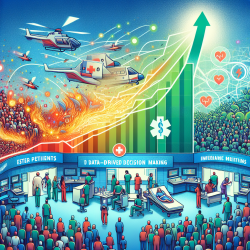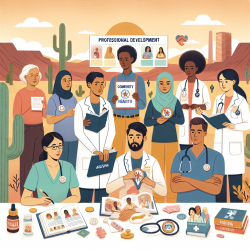Introduction
The Household Humidifier Disinfectant Tragedy (HHDT) in Korea serves as a poignant reminder of the critical need for robust chemical poisoning surveillance systems. This tragedy, which resulted in numerous fatalities and illnesses, underscores the importance of toxicovigilance and the establishment of comprehensive Poison Control Centers (PCCs). As practitioners in the field of special education and therapy, understanding the lessons from HHDT can significantly enhance our approach to safety and prevention in our practices.
Key Lessons from HHDT
The research article "Lessons From the Household Humidifier Disinfectant Tragedy (HHDT) With Focus on the Chemical Poisoning Surveillance System: Review and Recommendation" highlights several critical deficiencies in Korea's legislation and surveillance systems. These include the lack of a centralized database for toxic substances, inadequate reporting mechanisms, and insufficient collaboration among health organizations. By addressing these gaps, practitioners can improve their skills and contribute to a safer environment for their clients.
Implementing Surveillance and Reporting Systems
One of the primary recommendations from the research is the establishment of a centralized database for toxic substances and poisoning cases. This database would facilitate real-time alerts and enable health professionals to respond swiftly to poisoning incidents. Practitioners should advocate for the integration of such systems in their institutions and encourage mandatory reporting of poisoning cases to enhance the overall safety net.
Collaboration and Communication
Effective collaboration among health organizations is crucial for the success of any surveillance system. Practitioners should foster partnerships with local health departments and other relevant organizations to ensure a coordinated response to chemical poisoning incidents. By building a network of support, practitioners can enhance their capacity to manage and prevent such occurrences.
Continuous Professional Development
To stay abreast of the latest developments in toxicovigilance, practitioners should engage in continuous professional development. This includes attending workshops, seminars, and training sessions focused on chemical safety and poison control. By expanding their knowledge and skills, practitioners can better protect their clients and contribute to a safer community.
Encouraging Further Research
The HHDT highlights the need for ongoing research in the field of chemical poisoning and surveillance systems. Practitioners should encourage and participate in research initiatives that aim to improve toxicovigilance and enhance the effectiveness of PCCs. By contributing to the body of knowledge, practitioners can play a pivotal role in shaping safer practices and policies.
Conclusion
The lessons from the HHDT provide invaluable insights for practitioners seeking to improve their skills and contribute to a safer environment. By implementing the recommendations from the research, practitioners can enhance their approach to chemical safety and poison control. To read the original research paper, please follow this Lessons From the Household Humidifier Disinfectant Tragedy (HHDT) With Focus on the Chemical Poisoning Surveillance System: Review and Recommendation.










